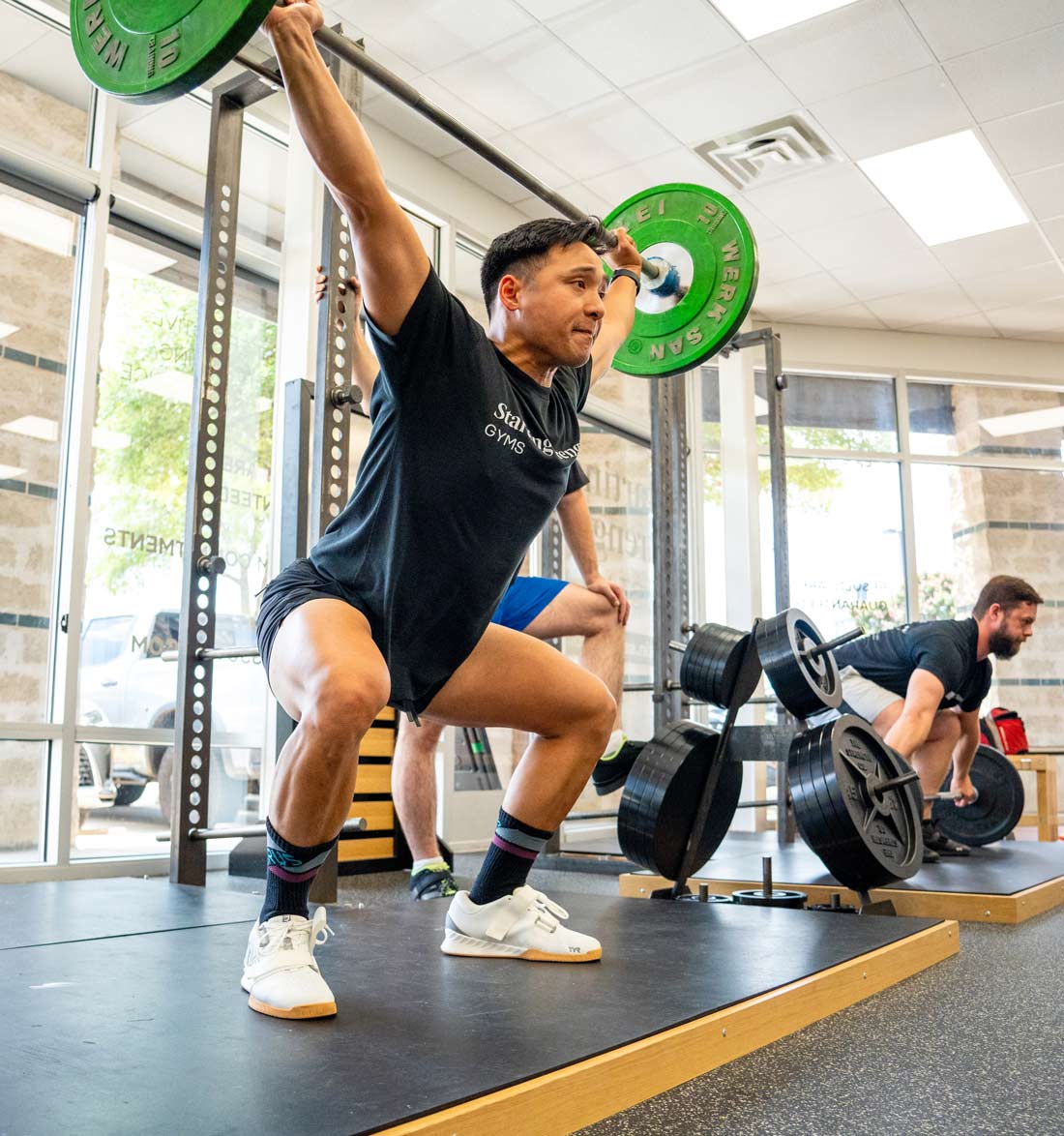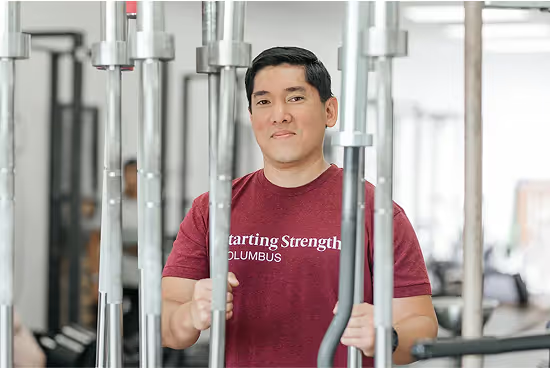If you’ve ever looked into buying a lifting belt, you’ve probably noticed there are a few different types — and plenty of opinions about which one is “best.” The truth is, the right belt depends on how you train and what you’re trying to accomplish.
At Starting Strength Columbus, our coaches help lifters of every level understand how to use belts properly for better performance and safety. Whether you’re training for strength, athletic performance, or just want more confidence under the bar, the right belt can make a difference — but only when you know how to use it.
1. The Real Purpose of a Lifting Belt
A belt doesn’t lift the weight for you. It helps you lift more safely and efficiently by giving your core muscles something to brace against.
When used correctly, it reinforces proper spinal alignment and helps maintain tightness during heavy lifts like squats, presses, and deadlifts.
Think of it as a tool that enhances your technique — not a shortcut.
2. Powerlifting Belts vs. Olympic Belts
The two most common types of belts serve different purposes:
- Powerlifting belts are thick and uniform in width all the way around (usually 10–13 mm thick and 4 inches wide). They provide maximum support for squats and deadlifts, where bracing stability is key.
- Olympic lifting belts taper at the front to allow more mobility for lifts like cleans, jerks, and snatches, where you need to bend, rotate, and move dynamically.
At Starting Strength Columbus, we primarily use powerlifting-style belts because they’re ideal for the foundational barbell lifts.
They give you the stability you need to move heavier loads safely without restricting proper movement patterns.
3. Do You Need a Belt?
Beginners don’t need a belt right away — form comes first.
Once your technique is consistent and you’re lifting heavier loads, adding a belt can help you push safely beyond your previous limits.
Our coaches teach when and how to use it effectively, so it supports your training instead of becoming a crutch.
Used correctly, a belt helps you lift more weight, more confidently, and with less risk of injury.
4. Choosing Quality Over Hype
A good lifting belt is an investment that can last for decades. Look for one made from quality leather or durable synthetic material with a secure buckle or lever design. Avoid gimmicky or thin “fitness” belts — they might look nice, but they won’t provide real support.
If you train with us, we have a variety of belts in the gym and will help you select the correct one.
Train With Confidence, Lift With Purpose
The right tools, used the right way, make good training even better.
If you’re ready to improve your technique, move safer under load, and perform at your best, we’ll show you how.
👉 Book your free 30-minute coaching session here.
Train smarter. Lift stronger. And get the most out of every rep with expert coaching at Starting Strength Columbus.




